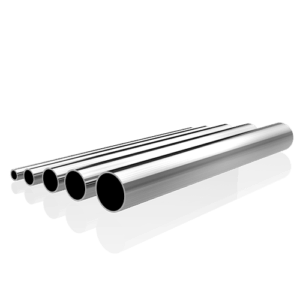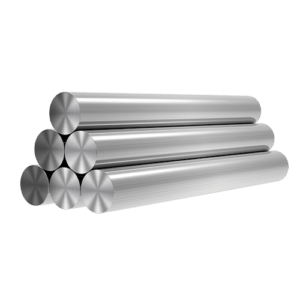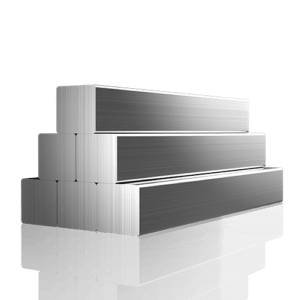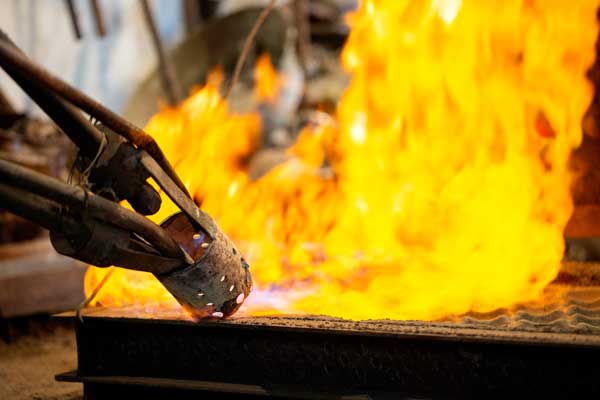Welcome to My Blog!
Before we dive into the content, I’d love for you to join me on my social media platforms where I share more insights, engage with the community, and post updates. Here’s how you can connect with me:
Facebook:https://www.facebook.com/profile.php?id=100090063158454
Now, let’s get started on our journey together. I hope you find the content here insightful, engaging, and valuable.
Table of Contents
Introduction

Stainless steel is renowned for its corrosion resistance, strength, and aesthetic appeal. It is extensively utilized across various industries, including construction, automotive, and food processing. However, selecting the appropriate grade of stainless steel can be a complex decision. The comparison between 304 vs 430 stainless steel is frequently encountered when choosing materials for projects that require strength, durability, and aesthetic qualities. Both grades belong to the austenitic and ferritic families of stainless steel, respectively. Yet, they possess distinct attributes that may render one more suitable for your specific needs.
In this blog post, we will delve into a detailed comparison of 304 vs 430 stainless steel, focusing on their composition, properties, advantages, disadvantages, and typical applications. By the end of the post, you will gain a comprehensive understanding of which material is best suited for your project. Whether you’re considering 304 vs 430 stainless steel for construction, automotive, or food processing applications, this analysis will provide valuable insights to guide your decision-making process.
What is 304 Stainless Steel?
304 stainless steel is one of the most commonly used grades of stainless steel, thanks to its excellent corrosion resistance and high levels of durability. It belongs to the austenitic group of stainless steels, which means it has a face-centered cubic crystal structure. This gives 304 stainless steel a number of distinct properties, including its high resistance to corrosion and its ability to be easily fabricated into different shapes.
Composition and Properties of 304 Stainless Steel
304 stainless steel is made up of approximately 18% chromium and 8% nickel, with the remainder being primarily iron. This combination gives it its signature qualities:
- Corrosion Resistance: 304 stainless steel is highly resistant to corrosion, making it ideal for applications in harsh environments such as kitchens, medical equipment, and chemical processing.
- Formability: 304 steel is known for its excellent formability, which makes it easy to weld, machine, and fabricate.
- Aesthetic Appeal: Its smooth surface and ability to retain its shiny appearance over time make it a popular choice for architectural and decorative applications.
Due to its high nickel content, 304 stainless steel is more resistant to oxidation, corrosion, and rust than lower-grade stainless steels.
What is 430 Stainless Steel?

430 stainless steel, on the other hand, belongs to the ferritic group of stainless steels. It is composed of about 16-18% chromium and very little to no nickel, which results in a different set of properties compared to 304 stainless steel.
Composition and Properties of 430 Stainless Steel
- Corrosion Resistance: While 430 stainless steel has good resistance to corrosion, it is not as resistant as 304 stainless steel. It is best suited for environments where exposure to harsh chemicals or extreme conditions is limited.
- Magnetic Properties: 430 stainless steel is magnetic, unlike 304, which is non-magnetic. This feature can be beneficial in certain applications where magnetism is desired.
- Cost-Effectiveness: Due to the absence of nickel, 430 stainless steel is generally more affordable than 304 stainless steel. This makes it a cost-effective choice for projects with budget constraints.
- Strength: 430 stainless steel has a slightly lower tensile strength than 304 stainless steel, which means it may not be the best choice for high-strength applications.
While 430 stainless steel offers some corrosion resistance and durability, it does not provide the same level of protection in aggressive environments as 304 stainless steel.
304 vs 430 Stainless Steel: Key Differences
To better understand the advantages and disadvantages of 304 vs 430 stainless steel, it’s helpful to compare their key characteristics side-by-side. The table below provides a quick overview of these differences between 304 vs 430 stainless steel. By examining the properties of 304 vs 430 stainless steel, we can gain insights into their respective strengths and weaknesses. This comparison will highlight the distinct features of 304 vs 430 stainless steel, enabling us to make informed decisions based on their unique attributes.
| Property | 304 Stainless Steel | 430 Stainless Steel |
|---|---|---|
| Corrosion Resistance | High resistance to corrosion in most environments | Moderate resistance, suitable for mild environments |
| Nickel Content | 8% nickel | Little to no nickel |
| Magnetic Properties | Non-magnetic | Magnetic |
| Formability | Excellent formability, easy to weld and fabricate | Less formable than 304 |
| Tensile Strength | Higher tensile strength | Lower tensile strength |
| Applications | Food processing, medical equipment, kitchen appliances | Automotive parts, appliances, decorative items |
| Cost | Higher due to the nickel content | More affordable due to lack of nickel |
Ideal Applications for 304 Stainless Steel

Given its high resistance to corrosion, formability, and strength, 304 stainless steel is often used in applications where performance and longevity are paramount. Some of the most common uses include:
- Food Processing and Storage: 304 stainless steel is widely used in food manufacturing plants, kitchens, and storage facilities due to its resistance to corrosion from acidic and alkaline substances.
- Medical Equipment: Its non-reactive nature makes it an ideal material for surgical instruments, medical devices, and hospital equipment.
- Chemical Processing: 304 stainless steel’s resistance to corrosion and high temperatures make it suitable for use in chemical and petrochemical processing plants.
In these industries, the durability and resistance to harsh chemicals and temperatures offered by 304 stainless steel can help ensure that products last longer and maintain their integrity.
Ideal Applications for 430 Stainless Steel
Although 430 stainless steel does not offer the same level of corrosion resistance as 304, it is still highly durable and suitable for specific applications. Some ideal uses for 430 stainless steel include:
- Automotive Parts: 430 stainless steel is commonly used in car exhaust systems and other automotive components where a magnetic property is beneficial.
- Home Appliances: The material is used in the manufacture of dishwashers, refrigerators, and other household appliances due to its lower cost and sufficient resistance to corrosion in household environments.
- Decorative Applications: 430 stainless steel is also used in architectural and decorative applications, such as trims, moldings, and decorative hardware, thanks to its shiny surface and cost-effectiveness.
While 430 stainless steel is not ideal for extreme environments, it offers a cost-effective option for less demanding projects.
Conclusion

In the debate of 304 vs 430 stainless steel, the best material for your project depends on the specific needs and conditions of your application. If you require high corrosion resistance, strength, and a non-magnetic material, 304 stainless steel is the clear winner. It is suitable for industries like food processing, medical equipment, and chemical manufacturing, where performance and longevity are essential.
However, if cost is a critical factor and the project does not involve harsh conditions, 430 stainless steel may be the better option. It is a strong, magnetic material that offers good corrosion resistance for less demanding environments, such as automotive parts, home appliances, and decorative applications.
By carefully evaluating the properties, costs, and intended uses of both materials, you can select the stainless steel that best meets your project’s requirements.
FAQ
Which is more corrosion-resistant: 304 or 430 stainless steel?
304 stainless steel is more resistant to corrosion compared to 430 stainless steel. Its higher nickel content helps it withstand harsher environments, including exposure to chemicals, moisture, and acidic conditions.
Is 430 stainless steel magnetic?
Yes, 430 stainless steel is magnetic, unlike 304 stainless steel, which is non-magnetic. This can be an important factor in certain applications, such as in the automotive or appliance industries.
Can 304 stainless steel be used for outdoor applications?
Yes, 304 stainless steel is suitable for outdoor applications because of its high resistance to corrosion from elements like rain and humidity. It is commonly used in architectural applications, outdoor furniture, and marine environments.
Is 430 stainless steel more affordable than 304?
Yes, 430 stainless steel is generally more affordable than 304 stainless steel due to the lower nickel content. However, the trade-off is a reduction in corrosion resistance and overall durability in harsh environments.
Can 430 stainless steel be welded?
Yes, 430 stainless steel can be welded, but it is not as easy to weld as 304 stainless steel. Proper procedures and welding methods must be used to ensure a strong bond.
